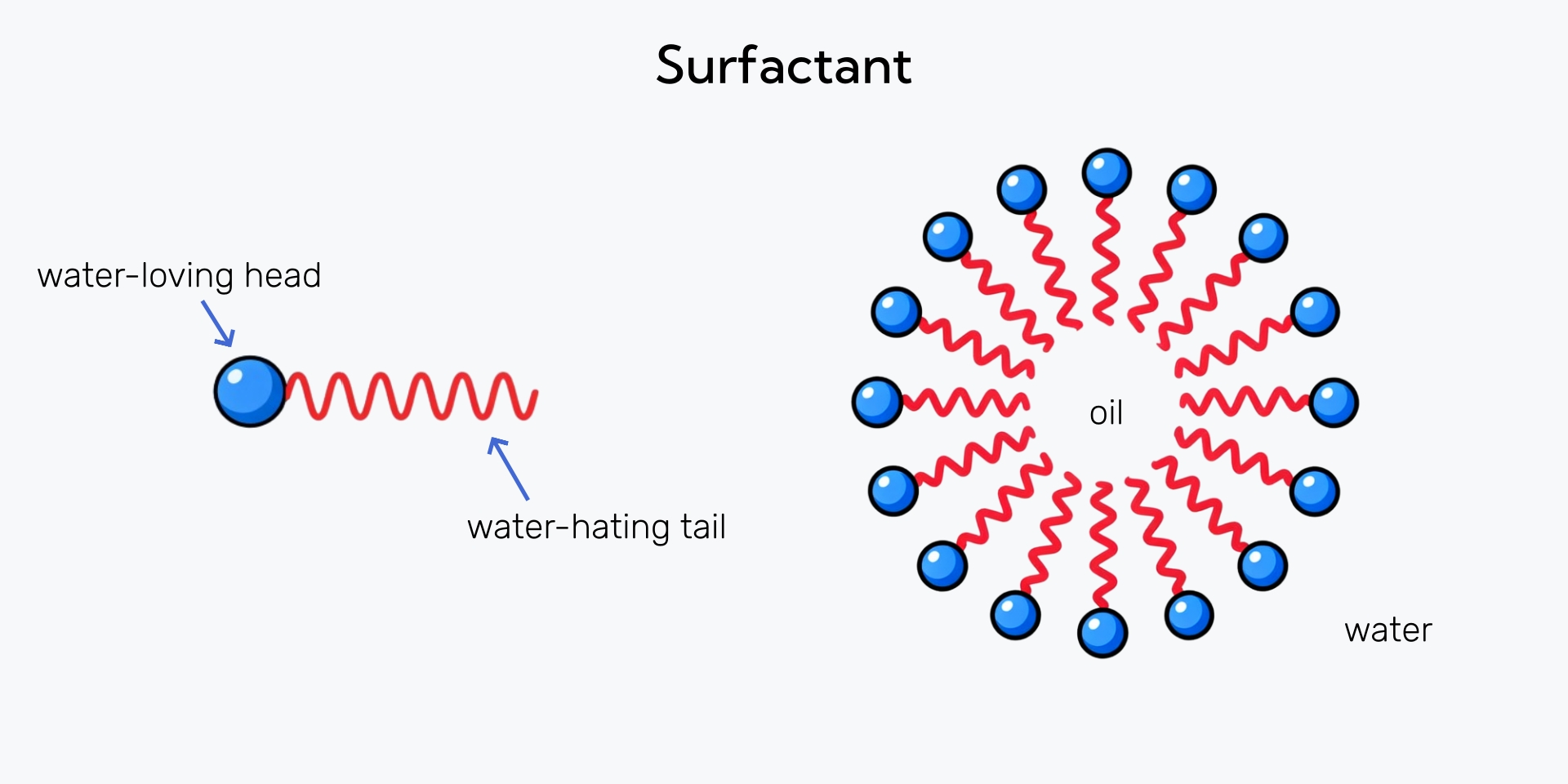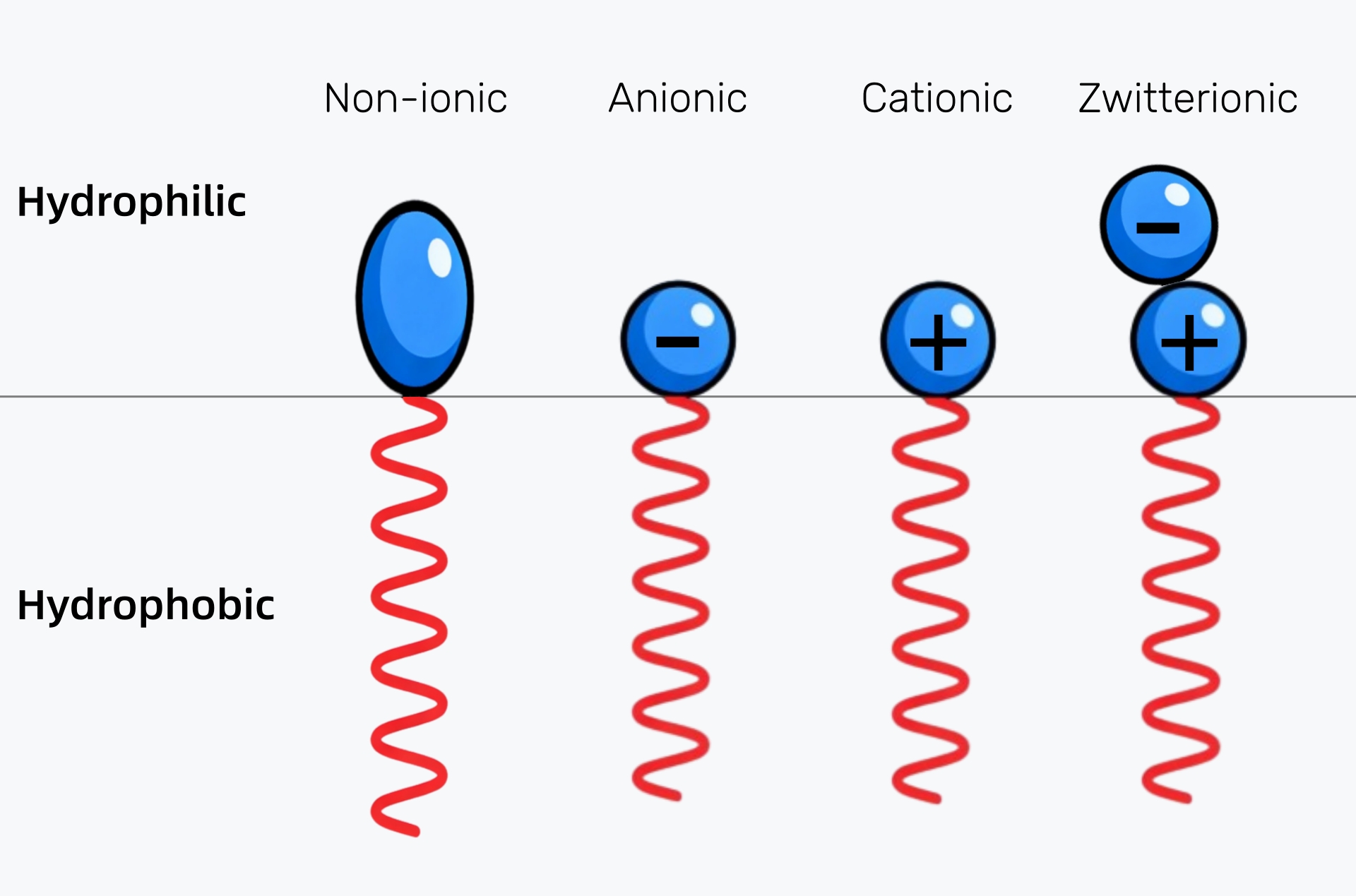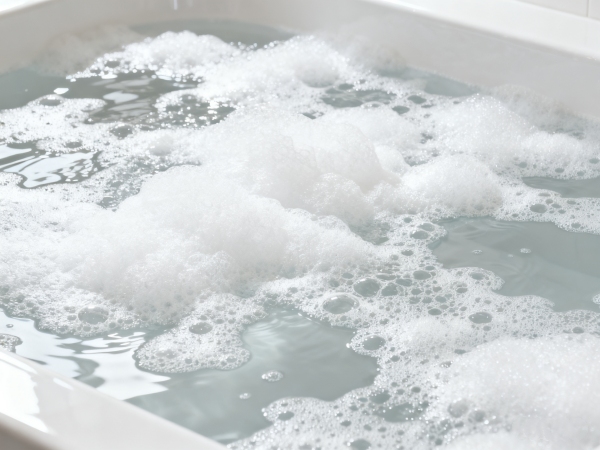We all know that surfactants, short for surface-active agents, are compounds that reduce the surface tension between two substances such as oil and water. Simply, they act as mediators that allow materials that normally don’t mix to blend effectively. This makes surfactants indispensable ingredients in a wide range of products—from detergents, shampoos, and cosmetics to agricultural formulations and industrial cleaners.
Each surfactant molecule has two parts: a water-loving head and a oil-loving tail. This dual nature enables it to interact with both water and oil, allowing for the removal of grease, the creation of stable emulsions, and the enhancement of the overall effectiveness of many formulations.

illustration
When surfactants are added to a liquid, they migrate to the interface between the liquid and air or oil, reducing the surface tension. This process allows water to spread more easily and interact with dirt or oil.
For example, in cleaning applications, the hydrophobic tail attaches to oily dirt while the hydrophilic head remains in water. When rinsed, the surfactant molecules lift and suspend the dirt in the water, allowing it to be washed away.
This simple yet powerful mechanism is what enables surfactants to clean, emulsify, wet, foam, or disperse—functions that are essential across countless industries.
Surfactants can be classified into four main categories, based on the charge of their hydrophilic head group:

illustration
Understanding the type of surfactant is critical when formulating products, as each category performs differently in terms of cleaning ability, foaming behavior, solubility, and interaction with other ingredients.
Surfactants are among the most versatile chemical ingredients in modern industry. Their ability to modify surface and interfacial properties makes them essential in numerous applications:
1. Home and Personal Care: Found in soaps, detergents, toothpaste, shampoos, and skincare products.
2. Industrial and Institutional Cleaning: Used in degreasers, metal cleaners, and textile processing.
3. Agriculture: Act as wetting agents and emulsifiers in pesticide formulations to ensure better coverage and absorption.
4. Food and Beverage: Help stabilize emulsions in sauces, creams, and processed foods.
5. Pharmaceutical and Healthcare: Assist in drug delivery systems and topical formulations.
This broad utility underscores why surfactants are vital to both everyday consumer goods and high-performance industrial systems.

Selecting the right surfactant can significantly influence a product’s performance, stability, and even its environmental footprint. Factors such as pH, ionic compatibility, foaming level, biodegradability, and end-use conditions must all be considered during formulation.
For instance, a detergent designed for delicate fabrics requires a mild nonionic or amphoteric surfactant, while an industrial degreaser may need a more powerful anionic system. Moreover, with growing sustainability demands, eco-friendly and biodegradable surfactants are gaining popularity among manufacturers seeking both performance and environmental compliance.
Partnering with a knowledgeable and experienced supplier ensures access to the right surfactant grades, technical data, and formulation support—helping manufacturers achieve consistency, regulatory compliance, and long-term customer trust.
Surfactants may appear to be simple additives, but they are in fact key functional ingredients that determine how effectively a product performs. Whether it’s enhancing cleaning power, improving texture, or ensuring stability, understanding how surfactants work is essential for creating innovative, high-quality formulations.
Hengxiang, as a top nonionic surfactant manufacturer with deep expertise in surfactant chemistry, provides high-performance and environmentally responsible surfactant solutions tailored for diverse industrial and consumer applications. With advanced production technology and a commitment to quality, Hengxiang helps global partners develop products that deliver superior performance, safety, and sustainability. Feel free to contact us!